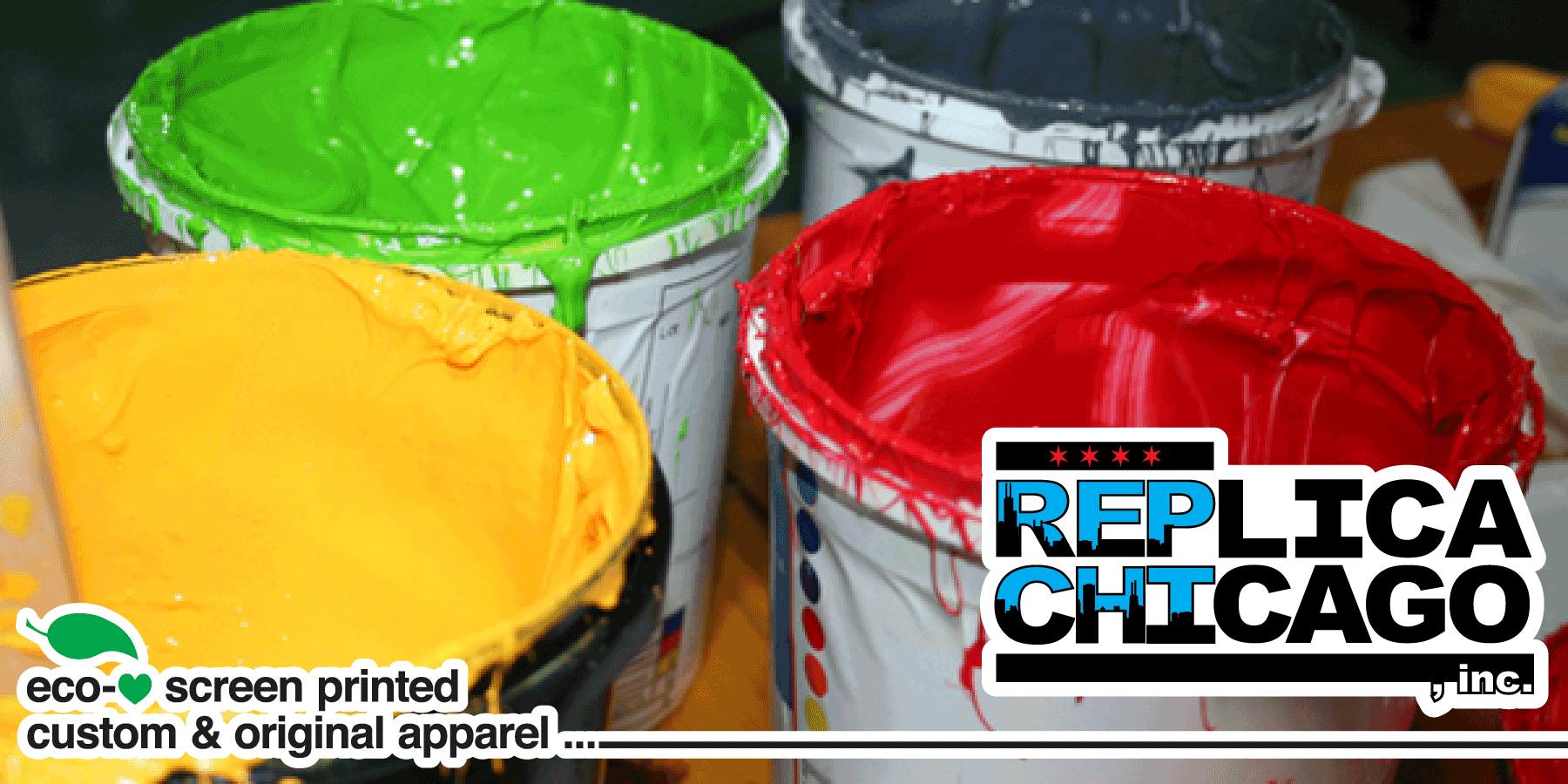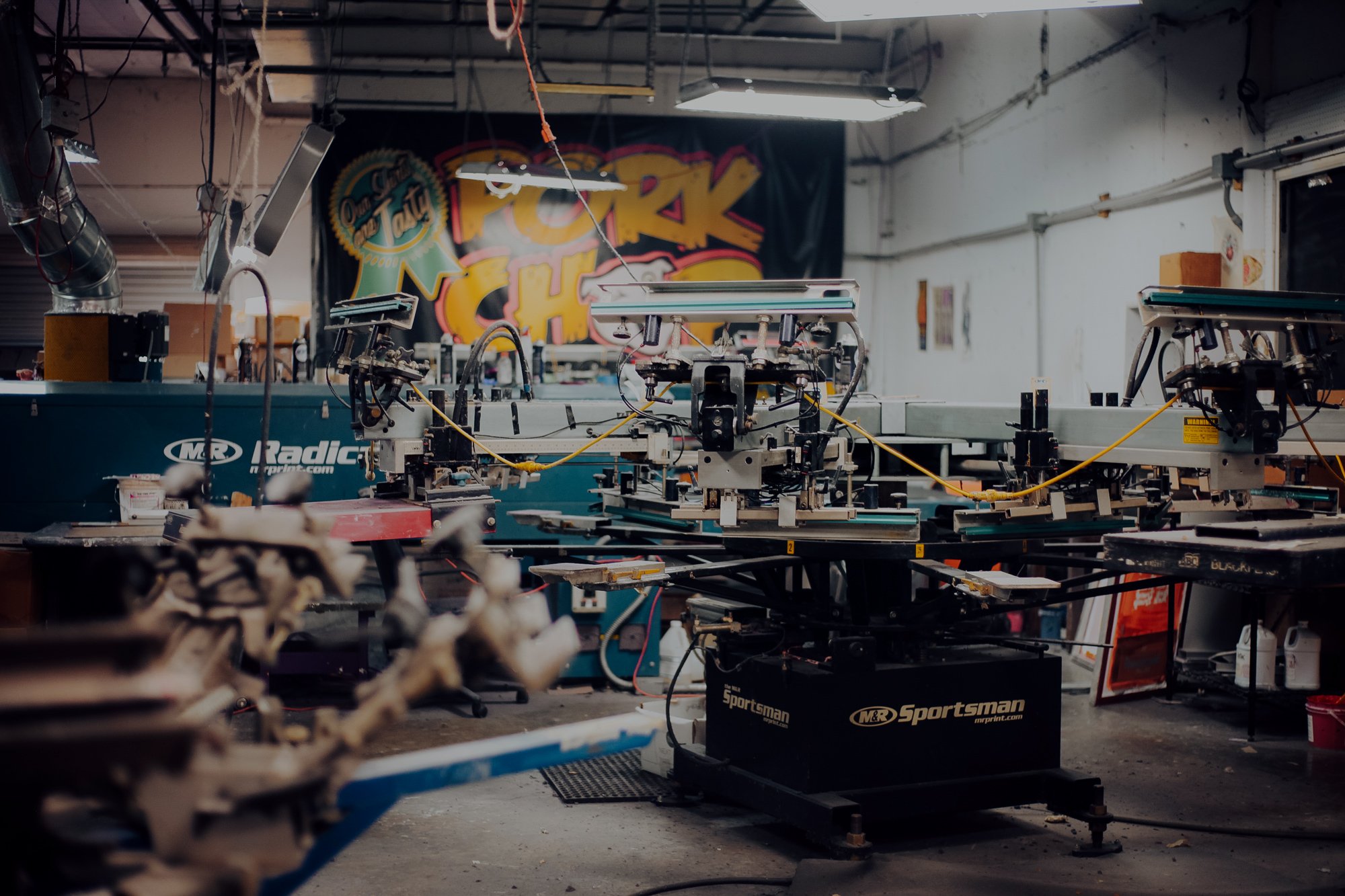Detailed Silk Screen Printing for Custom Art Apparel
Detailed Silk Screen Printing for Custom Art Apparel
Blog Article
Screen Printing Uncovered: Whatever You Need to Learn About T-Shirt and Garment Printing Strategies
Display printing is a remarkable approach that integrates art with method, providing limitless possibilities for creative thinking. Prepared to check out the essential components that make screen publishing an art type?
The Basics of Display Printing: How It Functions
When you plunge right into screen printing, you'll uncover it's both a science and an art. At its core, screen printing involves producing a pattern, or display, that enables ink to pass with just in particular areas.
Setting the screen over the material, then utilize a squeegee to push ink through the screen onto the garment. Each step is necessary, and understanding them will certainly boost your display printing skills, changing easy garments into distinct, meaningful items.
Sorts Of Screen Printing Strategies
As soon as you realize the essentials of display printing, it's time to check out the different techniques that can elevate your styles. One popular approach is typical screen printing, where ink is pressed through a stenciled display. This strategy is great for bold, lively colors. After that there's water-based ink printing, which uses a softer feeling and is green, however it needs a various method to healing.
If you're intending for great information, consider discharge printing. This method gets rid of color from the material, leaving a soft, classic look. An additional choice is plastisol printing, known for its durability and brilliant colors, making it a favored for many brands. Experiment with halftone printing to create slope results and intricate designs. Each strategy has its distinct charm, so don't be reluctant to attempt them bent on discover what suits your style best!
Crucial Devices for Screen Printing
To attain stunning outcomes in display printing, having the right tools is essential. You'll require a sturdy display printing frame, which holds the mesh that moves your style onto the garment. Next, invest in high-grade mops; these are vital for using ink evenly across the screen.
Picking the Right Inks and Products
When selecting inks and materials for screen printing, you require to take into consideration the kind of ink that functions finest for your task. Believe concerning fabric compatibility to ensure your layouts look excellent and last long. Likewise, check out eco-friendly ink choices to make your printing process much more lasting.
Sorts Of Display Inks
Picking the best screen ink is vital for achieving dynamic, resilient prints that satisfy your task's demands. There are several kinds of display inks to analyze. Specialized inks, such as glow-in-the-dark or metal, can include special effects to your designs.

Textile Compatibility Considerations
Comprehending material compatibility is vital for attaining top quality screen prints, specifically because various products respond distinctively to various inks. When picking inks, think about the material type-- cotton, polyester, or blends. For cotton, water-based inks work well, using soft qualities and breathability. Polyester, on the various other hand, frequently requires plastisol inks for far better attachment and dynamic colors. You might require to utilize a combination of both types if you're printing on blends. Always examine your inks on example material to guarantee they stick appropriately and maintain color stability. Furthermore, bear in mind that material weight and structure can influence the last result, so selecting the best ink and product combination is crucial for your job's success.
Eco-Friendly Ink Options
Environment-friendly inks are coming to be a preferred selection for screen printers who want to minimize their ecological effect while maintaining high quality. When choosing inks, consider water-based inks, which are much less unsafe and much easier to cleanse up contrasted to conventional solvents.
Additionally, look for inks made from renewable energies, such as soy or vegetable-based options. By picking the best inks and materials, you'll not only create sensational designs yet also add to an extra lasting printing process. Make the button, and your prints will show your dedication to the environment!
Preparing Your Style for Display Printing

Submit Layout Requirements
To assure your style looks dynamic and sharp on textile, you'll require to pay close interest to submit style demands for read this article display printing. Beginning with vector data like AI or EPS, as they can be scaled without shedding high quality. If you make use of raster images, go with high-resolution files, such as TIFF or PNG, ideally at 300 DPI. Avoid utilizing JPEGs, as they can lose clearness when resized. Make sure your style has a transparent history to stop undesirable white sides on your prints. Maintain color modes in mind; CMYK is conventional for screen printing, so convert your RGB creates as necessary - screen printing kit. By complying with these standards, you'll establish your art work up for an effective print.
Color Separation Techniques
Shade splitting up is a necessary step in preparing your style for screen printing, and mastering it can considerably improve your print high quality. You'll need to damage your design right into private colors, as each shade needs a different display throughout printing. This precision not just guarantees precise color depiction yet additionally simplifies the printing process.
Resolution and Size
Attaining the very best lead to screen printing begins with guaranteeing your layout has the best resolution and size. Ideally, your artwork needs to be at least 300 DPI (dots per inch) for sharp, clear prints. If you use reduced resolution, your end product might look less than professional and pixelated.
When it comes to dimension, take into consideration the dimensions of your print area. Layout your artwork to match the last print dimension, preferably developing it in the actual measurements you'll be publishing. This means, you'll stay clear of any kind of unexpected scaling concerns.
Always check your design in both vector and raster styles. Vector graphics can be scaled without losing high quality, making them optimal for screen printing. Preparing correctly will assure your design looks outstanding on every garment!
Step-by-Step Screen Printing Refine
Display printing is a vibrant procedure that permits you to create vibrant designs on various surface areas. To get begun, you'll need a screen, solution, and your selected ink.
After washing out the unexposed emulsion, your display prepares. Set it up on your printing surface and align your garment underneath it. Put ink onto the display and utilize a squeegee to push the ink via the stencil onto the fabric. Lift the display thoroughly and let the print dry. Lastly, treat the ink utilizing warm to guarantee durability. That's it! You have actually efficiently screen published your layout.
Tips for Effective Screen Printing Projects
While you're diving right into your display printing projects, keep in mind that prep work is essential to success. Start by gathering all your materials-- inks, garments, mops, and screens. A clean work space helps stop undesirable errors, so clean prior to you begin.
Next, verify your artwork is high-resolution and appropriately sized for your useful site garment. Examine your screen for proper direct exposure and tidy it completely to avoid smudges. When mixing your inks, follow the manufacturer's standards to attain the right consistency.
Throughout printing, use also stress with your squeegee for constant outcomes. Don't rush; take your time to confirm each print satisfies your requirements. After printing, let your garments dry completely before handling or packaging them.
Last but not least, constantly maintain an example of your benefit future recommendation. By doing this, you can analyze your progress and improve your techniques over time. Happy printing!

Regularly Asked Inquiries
The length of time Does It Require To Establish up a Display Printing Work?
Establishing up a screen printing task usually takes about half an hour to an hour. You'll prepare the displays, mix inks, and readjust journalism. The time differs based upon complexity and experience, so stay organized!
Can I Print on Various Material Types Using the Very Same Technique?
Yes, you can print on different these details fabric kinds utilizing the exact same technique, however you'll need to readjust your setups and inks. Some textiles soak up ink differently, so exploring assurances the very best results for each product.
What Are Typical Blunders to Stay Clear Of in Display Printing?
When display printing, stay clear of usual blunders like using the wrong ink, ignoring correct exposure times, or avoiding pre-press checks. Constantly evaluate your setup and preserve tidy displays to assure quality outcomes each time.
Just How Can I Effectively Tidy and Preserve My Screen Printing Equipment?
To correctly tidy and preserve your screen printing devices, you ought to frequently wash displays with proper solvents, check mops for wear, and guarantee all devices are saved dust-free and dry. Uniformity stops expensive repairs and improves efficiency.
Is Display Printing Eco Friendly Contrasted to Various Other Techniques?
Display printing can be extra eco-friendly than various other techniques, specifically if you make use of eco-conscious products and water-based inks. By choosing sustainable products and practices, you lower waste and lessen your influence on the world.
Display Printing Uncovered: Everything You Need to Know About Tee and Garment Printing Strategies
At its core, screen printing includes producing a pattern, or screen, that permits ink to pass through only in specific areas. Position the screen over the textile, after that use a squeegee to push ink with the display onto the garment. One popular technique is traditional screen printing, where ink is pushed through a stenciled display.When picking inks and materials for display printing, you require to take right into account the type of ink that functions ideal for your project.
Report this page